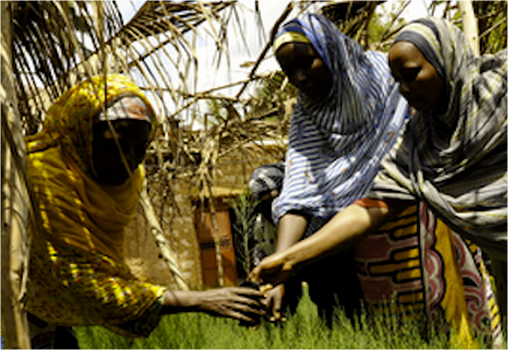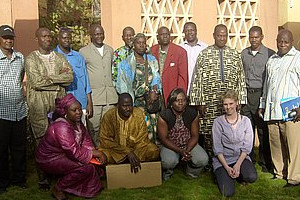Difference between revisions of "ES - Introduction"
(→Field experiences) |
(→Field experiences) |
||
| Line 20: | Line 20: | ||
===Field experiences=== | ===Field experiences=== | ||
<br> | <br> | ||
| − | {|style="border: 2px solid #e0e0e0; width: | + | {|style="border: 2px solid #e0e0e0; width: 20%; text-align: justify; background-color: #e9f5fd;" cellpadding="2" |
<!--rsr logo here--> | <!--rsr logo here--> | ||
|- style="vertical-align: top" | |- style="vertical-align: top" | ||
Revision as of 03:14, 12 March 2014

Environmental sustainability refers to a state in which the demands placed on the environment can be met without reducing its capacity to allow all people to live well, now and in the future. Environmental sustainability is the context within which social and economic life happen. Also, social inequity directly affects environmental viability.
The linkages between WASH and environmental sustainability are mutually reinforcing: for example, securing sustainable access to water, particularly for the poorest and most vulnerable, depends on maintaining the integrity of the wider watershed. At the same time, improving access to sanitation serves freshwater conservation by addressing pollution from human waste. In this way, access to adequate sanitation can reduce some of the estimated 2 million tons of sewage and industrial and agricultural waste discharged daily into the world's lakes and streams.
Environmental sustainability includes an assessment of the hydrological, ecological and socio-economic situation of the (smallest) relevant catchment level in which the intervention takes place. This way water flows and community needs can be understood from a landscape perspective taking to account relevant upstream and downstream connections. Why? This way WASH interventions can be planned and located at the best suitable place in the landscape tapping in on known and optimized water resources (e.g. through 3R techniques) and it is known how the natural water - and ecosystems - will deal with (reduced) wasteflows. Further, best informed decisions can be made regarding technology choices. Such catchment assessments also identify the particular resources and services of the natural environment upon which the community depends and therefore ensures that WASH interventions are planned in such a way that these resources and services are maintained.
Gender importance
Gender, in particular, is a key theme for promoting environmentally sustainable WASH programs. This is also referred to as Gender Mainstreaming. Climate change will aggravate the burden on women and girls by increasing the time and distance to collect water during droughts; and, during floods, by worsening vulnerability to water-related diseases like cholera and diarrhea. Despite their central role in household management of water resources, women are often excluded from participation in the planning and decision-making around WASH programs.
However, experience shows that projects designed and run with the full participation of women are more sustainable and effective than those that are not (Wijk‐Sijbesma et al., 2001). To address gender inequity, efforts to integrate environmental sustainability and improved WASH services should include gender analysis and a comprehensive approach to ensure – among men and women, boys and girls – broad participation in decision-making, equitable access to natural resources and the fair sharing of benefits that communities derive from healthy ecosystems.
Project example - Madagascar

An example of a recent project that successfully integrated WASH and environmental sustainability is the RANOn’ala Project in Madagascar. The Ranon’Ala Project was funded by the US Agency for International Development, and implemented by Catholic Relief Services, Conservation International, RTI International, and Caritas Madagascar. The project integrated WASH services and products with the protection of water sources, with a view to ensuring access to economically viable and safe water and sanitation services among vulnerable and poor communities in northeastern Madagascar. The project included significant innovations for hygiene and sanitation solutions, such as market-based financing for water infrastructure, watershed mapping and protection, and the use of information and communication technologies for information dissemination, monitoring, and evaluation.
The first step was to engage community stakeholders in water supply and sanitation planning. This was followed by measures to protect existing water sources, such as the use of community fines, reforestation and fencing of catchment areas, and the application of collective responsibility for ensuring the integrity of those sources. The project also supported the installation of boreholes, pumps, and water supply systems to provide water from these protected sources to private taps and community water points (Bonnardeaux, 2012).
Field experiences
 E-mainstreaming for DWA Mali |
Environmental Sustainability links
- Ranon'Ala project : water, hygiene, sanitation. Centre Mandrosoa.
Acknowledgements
- Financial Lexicon. Environmental Sustainability.
- WASH and environmental sustainability: Integration for sustainable development. The Post 2015 Water Thematic Consultation - Water, Sanitation and Hygiene: Framing Paper. UN Water.
- Environmental Sustainability, Dutch WASH Alliance.
